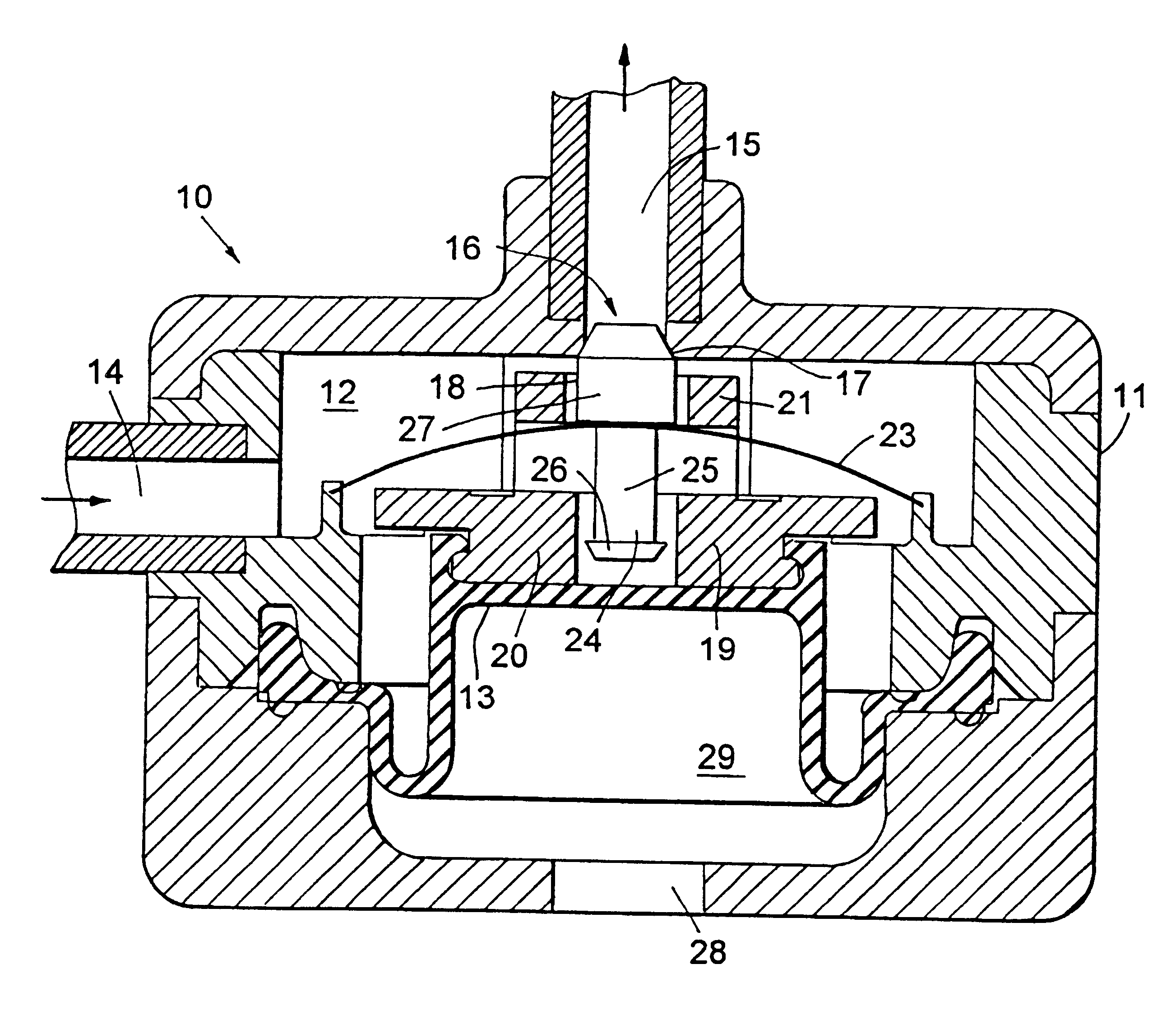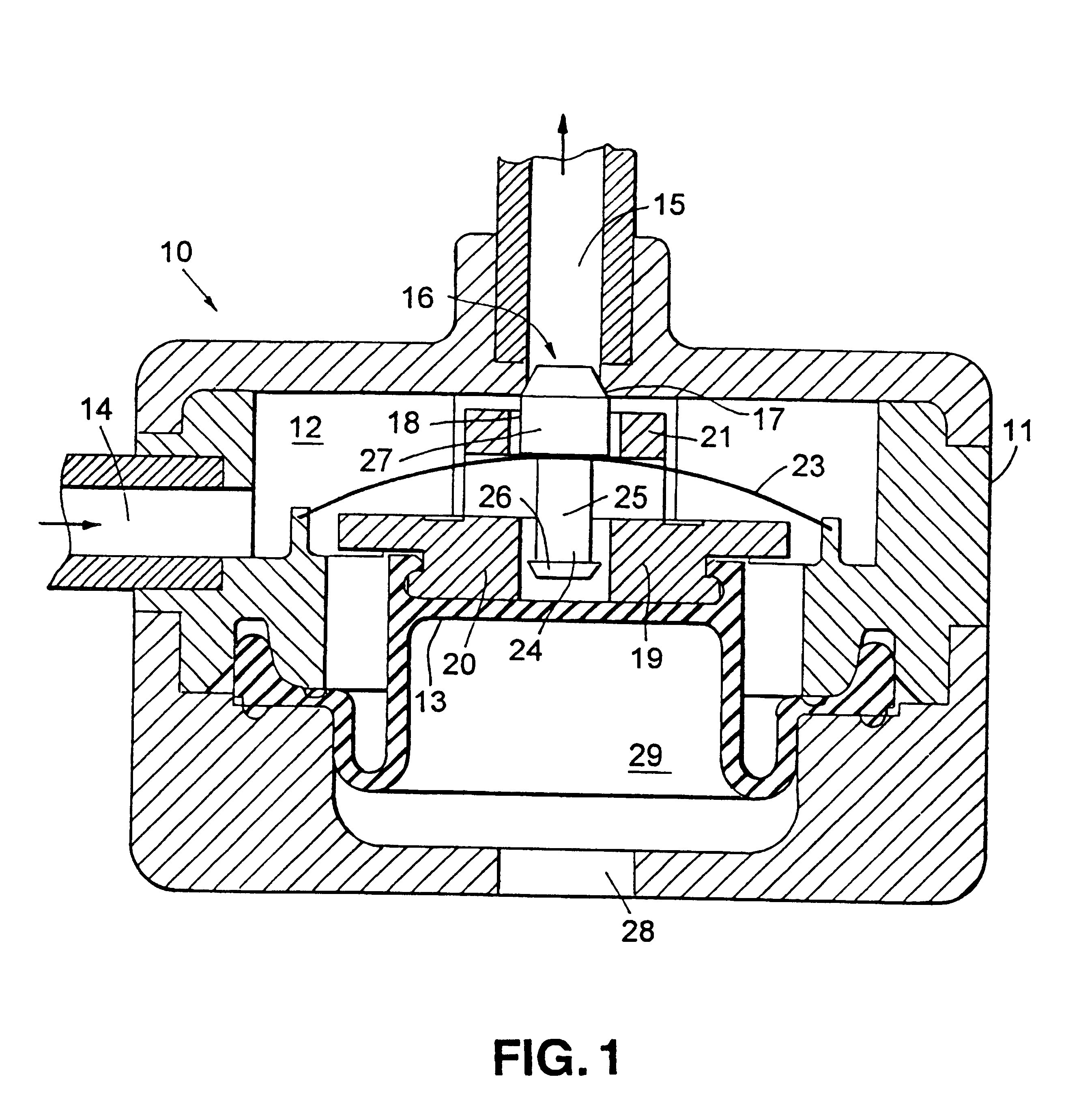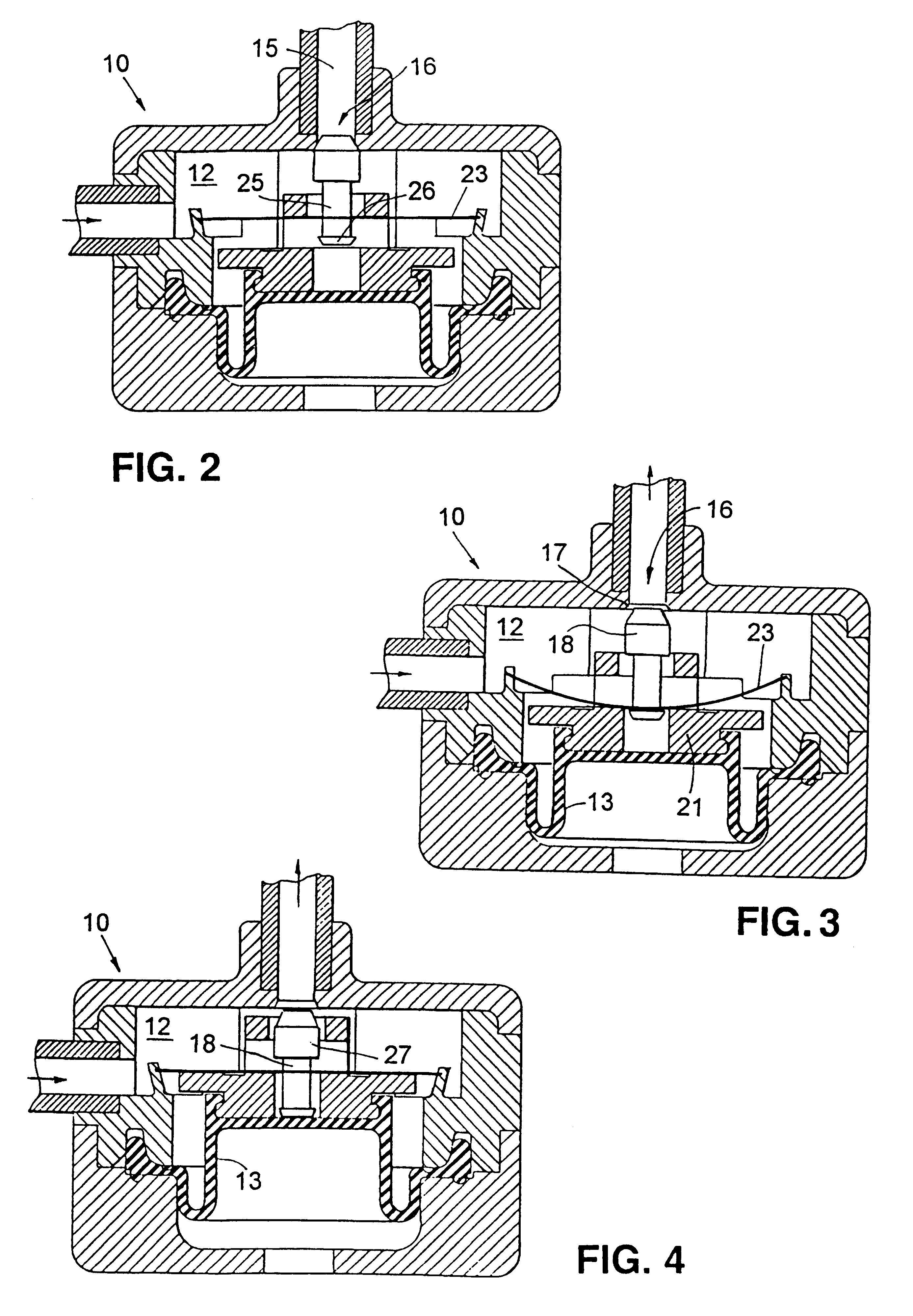Device for generating a pulsatile fluid drug flow
- Summary
- Abstract
- Description
- Claims
- Application Information
AI Technical Summary
Benefits of technology
Problems solved by technology
Method used
Image
Examples
Embodiment Construction
In FIG. 1 there is indicated, generally at 10, a device according to the invention comprising a generally cylindrical housing 11, seen here in sectional elevation, which contains an internal chamber 12 defined in part by a diaphragm 13. Diaphragm 13 is able to move downwards and upwards so as to expand and contract chamber 12. Chamber 12 is provided with an inlet 14 which can be connected to a continuous drug pump and an outlet 15 through which drug can be pumped from the chamber 12. A valve 16, in the form of a valve seat 17 and a blocking member 18, controls the flow of drug from chamber 12 through outlet 15.
Diaphragm 13 is provide with support member 19 which comprises a lower annular section 20 and an upper annular section 21. An actuating member in the form of a spring 23 is mounted within housing 11 such that it is situated between the upper and lower annular sections 20,21. Spring 23 consists of a thin convex circular metal disc which can be flipped to a concave configuration...
PUM
 Login to View More
Login to View More Abstract
Description
Claims
Application Information
 Login to View More
Login to View More - R&D
- Intellectual Property
- Life Sciences
- Materials
- Tech Scout
- Unparalleled Data Quality
- Higher Quality Content
- 60% Fewer Hallucinations
Browse by: Latest US Patents, China's latest patents, Technical Efficacy Thesaurus, Application Domain, Technology Topic, Popular Technical Reports.
© 2025 PatSnap. All rights reserved.Legal|Privacy policy|Modern Slavery Act Transparency Statement|Sitemap|About US| Contact US: help@patsnap.com



